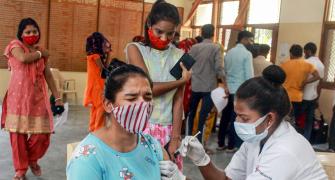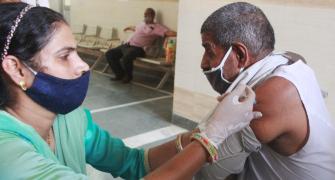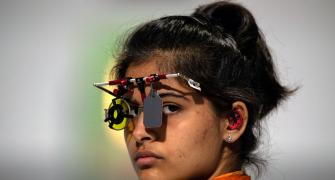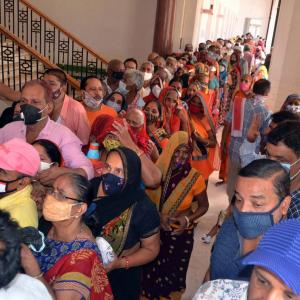As the rural areas account for more than 40% of the country’s population, they need to receive at least 41.7 per cent of the doses to make vaccine administration more equitable, reports Ishaan Gera.
The 'free for all' vaccination policy has made a difference to vaccination rates across India. Not only has the pace of vaccination picked up, the distribution of vaccines, too, has become a bit more equitable since.

While India had administered only 284 million vaccines until June 21, it has since covered 545 million people with the first dose and 168 million with the second. In all, 713 million doses have been administered across the country.
The government crossed the 10-million daily vaccination mark on August 27 and averaged 7.04 million vaccines daily as against the seven-day average of 3.48 million until June 21.
A Business Standard analysis shows that vaccination in rural districts has jumped 2.5 times since June 21. Until then, rural districts in the country (with less than 20 per cent population residing in urban areas) had administered 16.9 doses per 100 people. On August 28, the ratio of administered doses was 41.6.
In semi-urban districts, the increase was 2.4-times, from 19.6 to 46.3 doses per 100 people.
The urban centres rose relatively slowly at 2.1 times, with doses rising from 27.6 to 59.1 per 100 people.
While the rural districts are apportioning more doses since June 21, there is still a considerable divide between rural and urban centres. Urban districts still account for 46.1 per cent of the total administered doses. Though this ratio has decreased from 49 per cent, the corresponding increase in rural areas is just 2.3 per cent since June 21.
Semi-urban centres (with 20-30 per cent population residing in urban areas) have witnessed a mere 0.5 per cent increase in allocation.
In terms of daily doses, urban districts still account for over two-thirds of allocated vaccine doses. One-fifth of the vaccines have been administered in semi-urban centres, whereas rural areas account for a third of the total allocation.
The relative population shares of urban, semi-urban and rural districts, according to the 2021 Census, are 38.2 per cent, 20.1 per cent and 41.7 per cent, respectively. So, rural areas need to receive at least 41.7 per cent of the doses to make vaccine administration more equitable. But till now, they have received only 35.1 per cent of the doses.
There is also a significant state-wise variation in administering vaccine doses. In Odisha, for instance, 71 per cent of the population lives in rural districts, but only 61 per cent of vaccine doses have been administered in these districts.
Haryana has a gap of 7.2 per cent between doses administered and population. While 18.1 per cent of its population resides in rural districts, only 10.9 per cent of the total doses have been administered in the rural areas. In West Bengal, the gap is 7.1 per cent while it is 5.7 per cent in Madhya Pradesh and 5.2 per cent in Bihar. In Karnataka, it is only 1 per cent, and in Maharashtra, 1.6 per cent.
Kerala, Chhattisgarh, Tripura, Himachal Pradesh and Uttarakhand have performed better, with more doses being administered in the rural districts. In Kerala, the gap is negative 2.3 per cent, ie, the rural districts have received 2.3 per cent more doses than their share in the total population. Chhattisgarh is even better with a 4.8 per cent gap favouring rural areas, and Uttarakhand tops all states with a 10 per cent gap favouring the rural districts.
As the fear of a third wave looms, India needs to ensure that vaccines reach rural and semi-urban districts, since these are deficient in the healthcare infrastructure.











